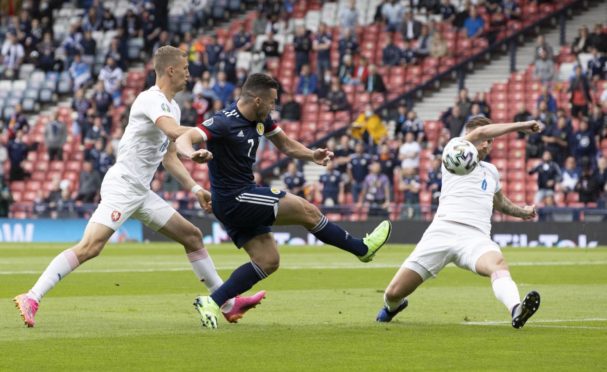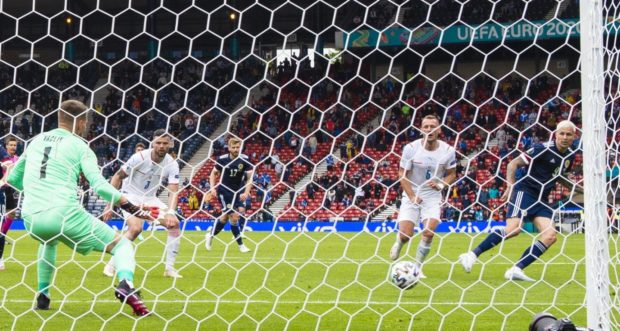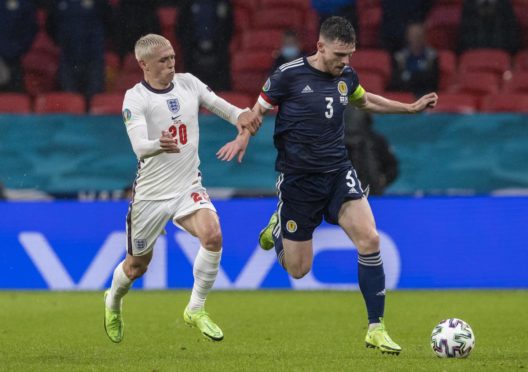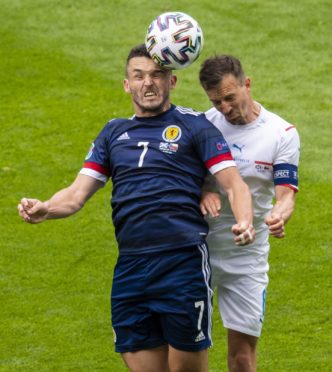A nation holds its breath as Scotland aim to make history by reaching the knockout phase of a major finals for the first time.
For the moment, however, the only record held by Steve Clarke’s men at Euro 2020 is an unwanted one: the sole side in the tournament yet to score a goal.
However, this is not a tale of cautious tactics or a lack of adventure. Several individuals — notably John McGinn and Andy Robertson — have shone going forward, while the team is functioning as an attacking unit.
Of course, profligacy plays a part, while other nations have more deadly strikers. However, UEFA’s official statistics suggest that, with the same level of performance at Hampden, Scotland will ripple the net against Croatia.
Surely. Hopefully. Maybe.
Shots
Scotland have had a pop at goal on 30 occasions in just two fixtures — joint-ninth in the whole tournament. However, NO TEAM that has only played two games, as of Tuesday afternoon, have registered more attempts.
Of those 30, a remarkable 18 have been blocked; such a recurring theme in the 2-0 defeat against the Czech Republic. Only Denmark (20) have seen more digs deflected to safety.
Lyndon Dykes hooks a shot at goal but it's cleared off the line by Reece James.
Watch LIVE: https://t.co/rvaZapSXcz#ENGSCO #EURO2020 pic.twitter.com/Xr25ArP7h8
— STV Sport (@STVSport) June 18, 2021
With six shots on target, Scotland have worked the opposition keeper more often than the likes of France, Sweden, Croatia and England.
xG
The ‘expected goal’ statistic, which measures the likelihood of a chance being scored, is always a divisive one, but undeniably serves as a useful tool to prove that Scotland have created several excellent opportunities.
In their opener against the Czechs, Infogol reported that Scotland registered an xG of 2.29. For context, Belgium and the Netherlands scored three goals apiece in match-day one from respective xGs of 1.56 and 2.07.
Andrew Robertson
The Scotland skipper, put simply, cannot do much more.
He has attempted more crosses (23) than any other player in the tournament, with nine of those deemed ‘completed’ — one behind the metric leader, Austria’s David Alaba.
The former Dundee United star has produced five offensive dribbles, more than the likes of Raheem Sterling, Mason Mount and Serge Gnabry and, simply implementing ‘the eye test’, his surges forward and set-pieces have been superb.
John McGinn
While the loss of Billy Gilmour was a shocker, the ongoing ability to select John McGinn is a cause for celebration and, if Scotland are to bag a vital goal, there is every chance he will be at the heart of it.
Although he has yet to rediscover the goal touch in dark blue which he had prior to Euro 2020, he has seen five efforts blocked — the joint-most of any player along with Joel Pohjanpalo.
If the ex-Hibs hero can get that extra yard in the final third, it will make all the difference.
Number of attacks
The metric which measures how many time a team has launched a foray forward illustrates that Scotland have been anything but on the back foot. Their tally of 72 is more than England (71) and level with this evening’s opponents, Croatia.



